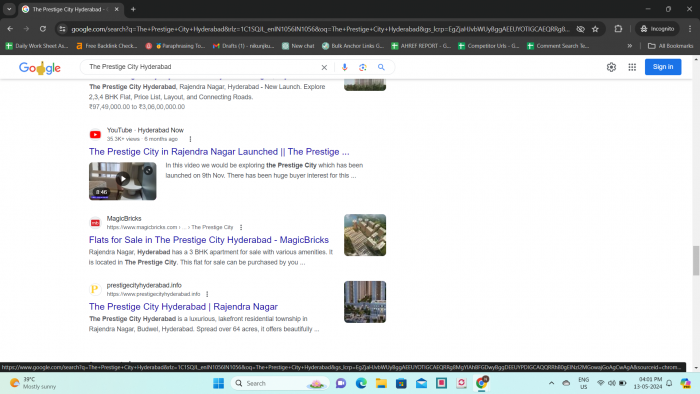mosquito in india
Mosquitoes are not just a nuisance; they are vectors of serious diseases that significantly impact public health in India. The tropical climate of India, with its monsoon rains and vast water bodies, provides an ideal breeding ground for various mosquito species. Among these, the Aedes, Anopheles, and Culex mosquitoes are particularly noteworthy for their role in transmitting diseases like dengue fever, malaria, chikungunya, and Japanese encephalitis.
The Menace of Mosquito-Borne Diseases
-
Dengue Fever:
- Causative Agent: Dengue virus (DENV) transmitted by Aedes mosquitoes, primarily Aedes aegypti.
- Symptoms: High fever, severe headache, pain behind the eyes, joint and muscle pain, rash, and mild bleeding (e.g., nose or gum bleed, easy bruising).
- Epidemiology: Dengue is prevalent in urban and semi-urban areas. Epidemics typically occur in the post-monsoon season when mosquito populations surge.
-
Malaria:
- Causative Agent: Plasmodium parasites transmitted by Anopheles mosquitoes.
- Symptoms: High fever, chills, sweats, headache, nausea, vomiting, and fatigue. Severe cases can lead to anemia, respiratory distress, and even death if untreated.
- Epidemiology: Malaria is endemic in many parts of India, with a higher incidence in rural and forested areas.
-
Chikungunya:
- Causative Agent: Chikungunya virus (CHIKV) transmitted by Aedes mosquitoes.
- Symptoms: Sudden onset of fever, severe joint pain (often debilitating), muscle pain, headache, nausea, fatigue, and rash.
- Epidemiology: Outbreaks occur sporadically, often after the rainy season.
-
Japanese Encephalitis:
- Causative Agent: Japanese encephalitis virus (JEV) transmitted by Culex mosquitoes.
- Symptoms: Mild cases involve fever and headache, but severe cases can cause high fever, neck stiffness, disorientation, coma, seizures, spastic paralysis, and death.
- Epidemiology: This disease is more common in rural areas with irrigated rice fields and pig farming.
Factors Contributing to the Mosquito Problem
Several factors exacerbate the mosquito problem in India:
-
Climate and Environment:
- The warm, humid climate of India is ideal for mosquito breeding.
- Stagnant water, often found in discarded containers, open drains, and paddy fields, serves as breeding sites.
-
Urbanization and Population Density:
- Rapid urbanization and population growth lead to inadequate waste management and water storage practices, creating breeding habitats.
- High population density in urban areas facilitates faster transmission of diseases.
-
Water Storage Practices:
- In many parts of India, water storage in uncovered containers is common due to irregular water supply, providing breeding grounds for mosquitoes.
-
Public Awareness and Health Infrastructure:
- Lack of awareness about preventive measures and symptoms of mosquito-borne diseases.
- Inadequate health infrastructure to deal with outbreaks effectively, especially in rural areas.
Measures for Control and Prevention
Addressing the mosquito menace requires a multi-faceted approach:
-
Vector Control:
- Larval Control: Use of larvicides in stagnant water bodies and introducing larvivorous fish.
- Adult Mosquito Control: Regular fogging with insecticides during outbreaks and promoting the use of mosquito nets and repellents.
-
Public Awareness Campaigns:
- Educating the public on eliminating breeding sites, such as disposing of old containers, using covered water storage, and maintaining cleanliness.
- Awareness about the symptoms of mosquito-borne diseases and the importance of early medical consultation.
-
Community Participation:
- Involving communities in identifying and destroying mosquito breeding sites.
- Community-based health programs to monitor and control mosquito populations.
-
Healthcare Infrastructure:
- Strengthening healthcare systems for better diagnosis, treatment, and management of mosquito-borne diseases.
- Ensuring the availability of diagnostic facilities and effective drugs in endemic areas.
-
Research and Surveillance:
- Ongoing research to develop more effective mosquito control methods and vaccines for diseases like dengue and malaria.
- Robust surveillance systems to detect and respond to outbreaks swiftly.
Conclusion
The fight against mosquitoes in India is an ongoing battle that requires concerted efforts from the government, healthcare providers, and the community. With climate change potentially exacerbating the situation by expanding mosquito habitats, the need for sustainable and innovative solutions is more pressing than ever. Public education, improved infrastructure, and effective vector control strategies are crucial in mitigating the impact of mosquito-borne diseases and safeguarding public health in India.




































































https://www.dermandar.com/user/hydunitreview/
https://sociabuzz.com/hydunitreview
https://www.runnerspace.com/profile.php?member_id=702846
https://www.facer.io/u/hydunitreview
https://click4r.com/posts/g/16789187/the-prestige-city-hyderabad-luxury
https://recordsetter.com/user/hydunitreview
https://www.diggerslist.com/items/221283/the-prestige-city-hyderabad-luxury
https://www.exchangle.com/hydunitreview
https://li.sten.to/clairemontreview
https://hitaste.ru/forum/?PAGE_NAME=profile_view&UID=246555
https://www.yeuthucung.com/members/clairemontreview.179719/#about
https://taxguru.in/author/prestigeclairemontplan_7956/
https://community.thermaltake.com/index.php?/profile/243977-prestige-clairemont-review
https://www.alpenvereinaktiv.com/en/member/prestige-clairemont-review/288348802/
https://www.vbulletin.org/forum/member.php?u=579463
https://www.scca.com/clairemontreview
https://vocus.cc/user/@clairemontreviews
https://www.blackhatworld.com/members/sobhacrystalmeadows.1932355/#about
https://buildd.co/u/manikpawar
https://www.fimfiction.net/user/739168/sobhacrystalmeadows
https://fitinline.com/profile/manikpawar
https://www.inflearn.com/users/1396333
https://inkbunny.net/sobhacrystalmeadows
https://forum.m5stack.com/user/sobhacrystalmeadows
http://qooh.me/sobhplan